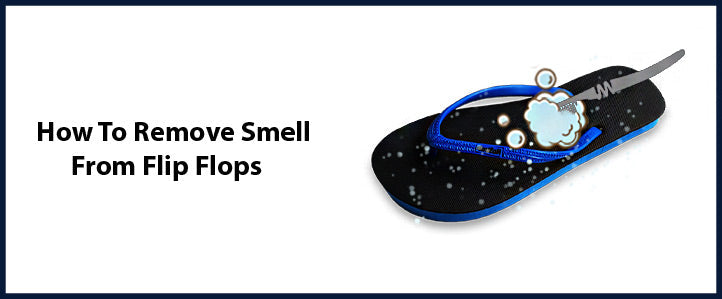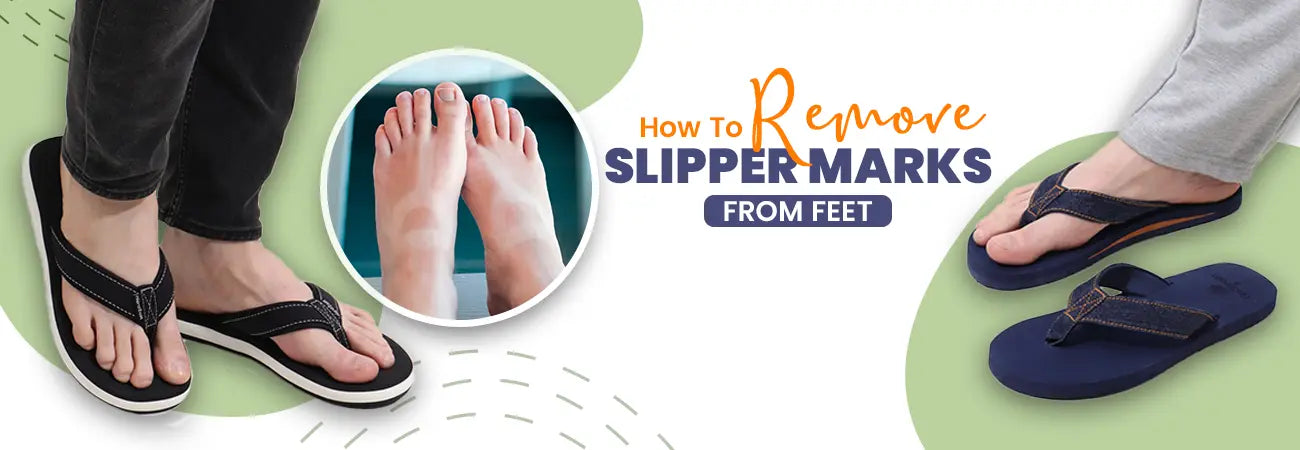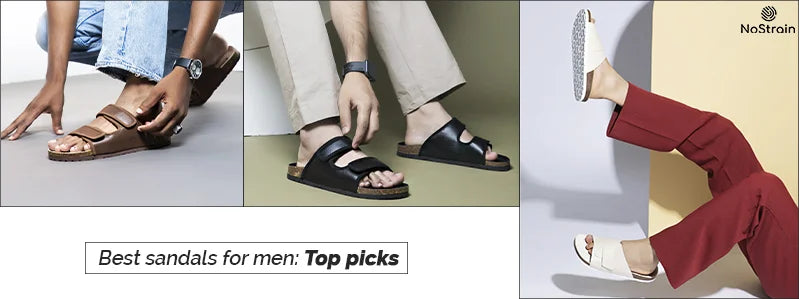
How To Get Rid of Smell in Flip Flops
Flip-flops are a popular and necessary style of footwear to wear in the summer, but they frequently have an unfavourable side effect: odour. Flip-flop odour is brought on by fungus and bacteria that flourish in the warm, damp environment. In this blog post, we'll delve into the science behind the odour-causing bacteria and fungi to better understand why flip-flops smell.
What Causes Flip Flops To Smell?
The warm, damp atmosphere on the slippers is the primary contributor to the flip-flop odor. Our feet are exposed to the air when we wear flip-flops, allowing sweat to escape. But the sweat that gathers on the bottoms of our feet cannot dissipate, staying there instead trapped.
As sweat builds up, it produces a warm, moist environment that is ideal for the development of germs and fungi. The sweat, skin cells, and other organic material inside the slippers are broken down by these microbes, creating volatile organic compounds (VOCs) that emit an unpleasant odour.
Types of Bacteria and Fungi That Cause Flip-Flop Odour
Flip-flop odour is caused by a variety of bacteria and fungi. Following are a few of the most prevalent bacteria:
Staphylococcus epidermidis: This bacteria is known to cause bad odour when it breaks down perspiration and oils and is present on the skin.
Micrococcus sedentarius: This bacteria is also present on the skin and is known to degrade fatty acids, which causes it to release a potent odour.
Candida albicans: It is a fungus that frequently causes yeast infections and has a pungent odour.
Aspergillus niger: It is a fungus that is frequently found in soil and can harm people by infecting their lungs. Additionally, it is noted to emit a musty odour.
How To Remove Odour From Rubber Slippers
Take action to lessen the warm, damp atmosphere inside the slipper and feet to prevent flip-flop odour. Here are some recommendations for avoiding odours:
Wear socks with your flip flops
Sweat accumulation in your slippers can be avoided by wearing socks with your flip-flops. When you wear flip-flops without socks, your feet may perspire, and the moisture may become trapped in the footwear, creating a wet environment that is perfect for the growth of bacteria. This moisture can be absorbed by socks, which helps lessen the quantity of perspiration and germs that accumulates in your flip-flops. Toe socks, which are made to be worn with open-toed shoes, are an alternative if you don't like how socks appear with flip-flops.
Clean your flip-flops regularly
Your flip-flops may gather sweat, dirt, and other substances over time, which may help an odour to grow. It's critical to routinely clean your flip-flops if you want to avoid this. After each use, you can clean them off with a moist towel, being careful to get rid of any dirt or debris. You can wash your flip-flops by hand with soap and water if they are very soiled, or you can even wash them in the washing machine (only be sure to first read the care instructions).
Use an odour-absorbing spray
There are sprays that can help eliminate the smell from your flip-flops. Choose products with baking soda or activated charcoal, which are both natural odour absorbers. Simply spritz the odour-absorbing spray inside your flip-flops, let them air dry, and then put them back on.
Allow your flip-flops to dry completely
It's crucial to let your flip-flops air out and totally dry after wearing them before putting them back on. By doing this, you may be able to stop the growth of germs, which prefer warm, moist conditions. Remove any inserts and set your flip-flops in a well-ventilated area to guarantee full drying.
Rotate your flip flops
The same pair of flip-flops being worn every day might cause odor to accumulate. Try to alternate between various pairs of flip-flops so that each pair can completely dry out in between uses. Since you won't be wearing out your flip-flops as soon, doing this can also help them last longer.
Choose flip-flops made of breathable materials
Some flip-flops have materials that prevent your feet from breathing, which can lead to sweat accumulation and odour. Be on the lookout for flip-flops made of breathable materials, such as cotton, canvas, leather, or natural rubber.
Use foot powder
The smell of flip-flops can be avoided easily and effectively by using foot powder. By absorbing moisture and sweat from the feet, foot powder serves to stop the development of germs that produce odours. Here's how to wear flip-flops and foot powder:
Choose a foot powder
The market is filled with a wide variety of foot powders. Choose one that is intended to both absorb moisture and prevent odour. On your flip flops, sprinkle a small bit of foot powder. Apply a small amount of foot powder to each flip-flop before donning them. Spread the powder evenly, paying special attention to the parts of your foot that tend to perspire the most.
Spread the powder evenly
Use your hand to spread the foot powder evenly throughout your flip-flops. You want to make sure that the powder is covering the entire footbed, not just the areas where you sprinkled it.
Wear your flip-flops as normal
Once you've applied the foot powder, you can wear your flip-flops as normal. The foot powder will help absorb sweat and moisture, which can prevent odour buildup.
Reapply as needed
Depending on how much you sweat, you may need to reapply foot powder throughout the day. If you notice your flip-flops starting to smell, try adding a little more foot powder to help absorb the odour.
Keep your feet clean
Cleaning your feet regularly can help stop the growth of germs that produce odour. Wash your feet frequently, especially if you've been sweating or have been going through unclean areas.
Avoid wearing flip-flops for extended periods of time
Consider wearing shoes with extra support if you plan to do a lot of walking or standing rather than flip-flops. Flip flops don't have much arch support, which might make your feet tired and cause odour to accumulate.
Store your flip-flops in a dry, well-ventilated area
Flip-flops stored in a wet, dark environment may develop odours. Instead, keep your flip-flops somewhere dry and well-ventilated so they have time to air out and thoroughly dry in between wears.
Design & material used in the flip-flops
The amount of bacteria your flip-flops carry depends on their design, curves, and form. Although a slipper with higher edges and a lower inside feels more cosy, it can hold a lot more bacteria than one with flat sides. To allow for water and cleanliness, grooves and areas close to the toe hole should be left clear. Rubber is a natural material that resists the growth of fungi and bacteria. Flip-flops made of rubber aid in preventing the formation of bacteria or fungi.
Conclusion
Although flip flops are a common choice for summer footwear, they frequently have a bad smell. Bacteria and fungus that flourish in the warm, moist environment inside the slippers are to blame for the odour. It's critical to take action to lessen the warm, damp atmosphere inside the flip-flops in order to prevent flip-flop odour. You can take precautions to avoid flip-flop stink and take pleasure in fresh-smelling footwear all summer long by comprehending the science behind it. Use NoStrain slippers made of natural rubber to avoid flip flop scent and maintain the health of your feet.
Additional Information: NoStrain offers a beautiful collection of slippers, including Arch Slippers and Angular Slippers. These stylish and comfortable slippers are made from odor-free materials. Order now!



Leave a comment
This site is protected by hCaptcha and the hCaptcha Privacy Policy and Terms of Service apply.